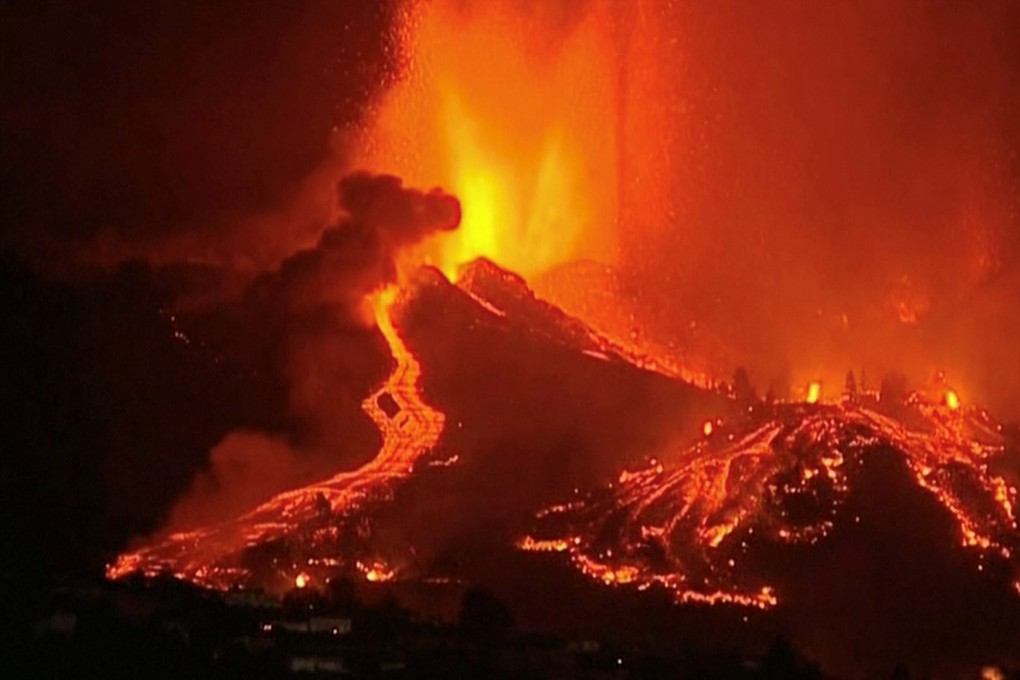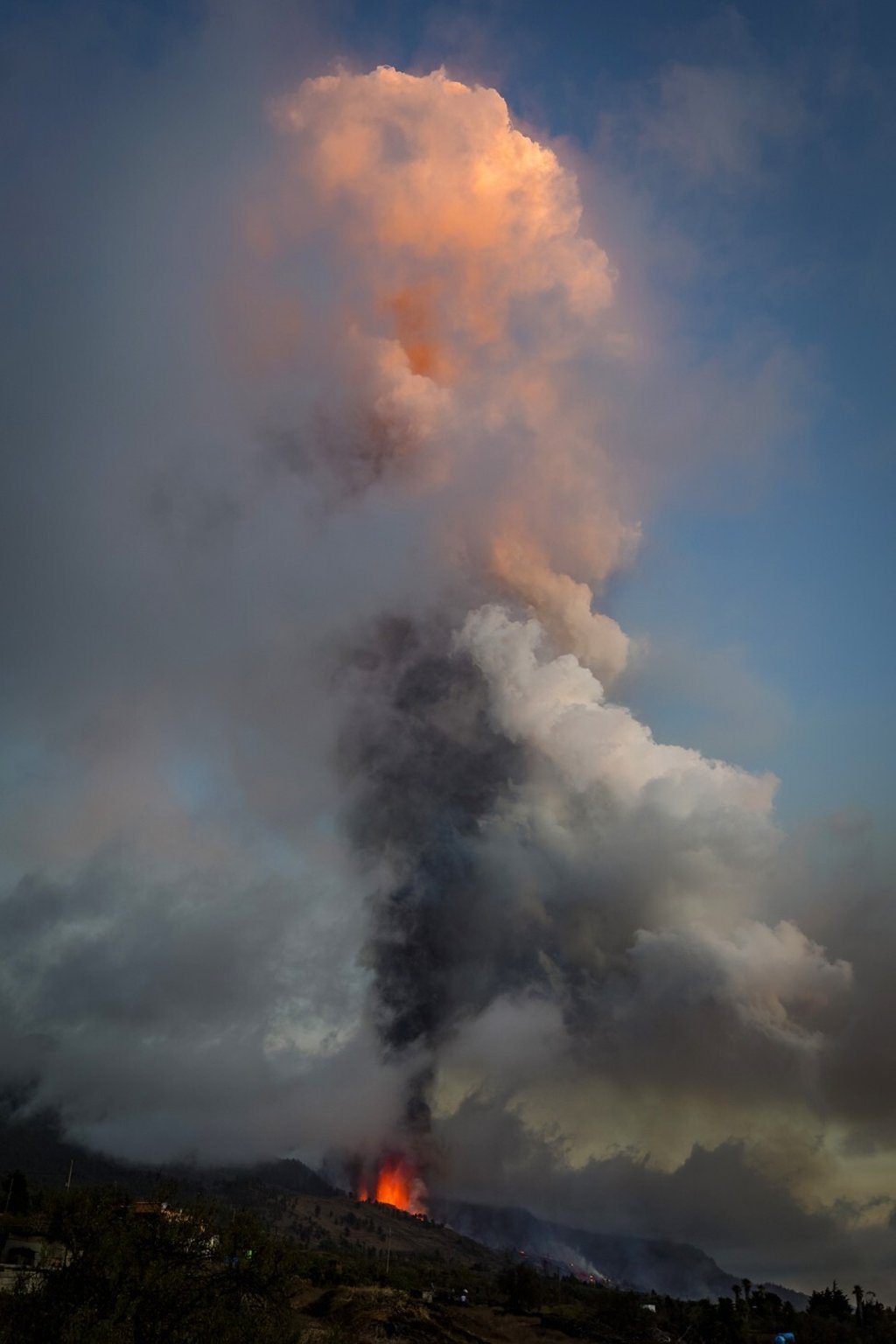Volcano erupts on Spain’s Atlantic Ocean island of La Palma
- Authorities immediately evacuated more than 1,000 people, but Spain’s Civil Guard said it may need to evacuate up to 10,000 residents
- The Canary Islands Volcanology Institute reported the eruption on Cumbre Vieja, which last erupted in 1971

A volcano on Spain’s Atlantic Ocean island of La Palma erupted on Sunday after a week-long build-up of seismic activity, prompting authorities to evacuate thousands as lava flows destroyed isolated houses and threatened to reach the coast. New eruptions continued into the night.
The Canary Islands Volcanology Institute reported the initial eruption near the southern end of the island, which saw its last eruption in 1971. Huge red plumes topped with black-and-white smoke shot out along the Cumbre Vieja volcanic ridge, which scientists had been closely watching following the accumulation of molten lava below the surface and days of small earthquakes.
Authorities immediately evacuated more than 1,000 people, but Spain’s Civil Guard said it may need to evacuate up to 10,000 residents.
La Palma, with a population of 85,000, is one of eight volcanic islands in Spain’s Canary Islands archipelago off Africa’s western coast. At their nearest point, the islands are 100km (60 miles) from Morocco.
A 4.2-magnitude earthquake was recorded before the volcanic eruption, which took place in an area known as Cabeza de Vaca on the western slope as the ridge descends to the coast. As the eruptions continued, at least two open mouths belched bright red magma into the air that then flowed in tight streams down the mountain slope.
